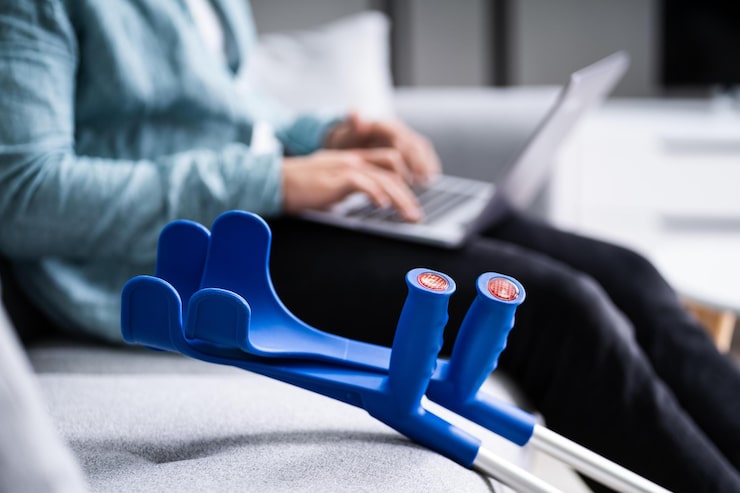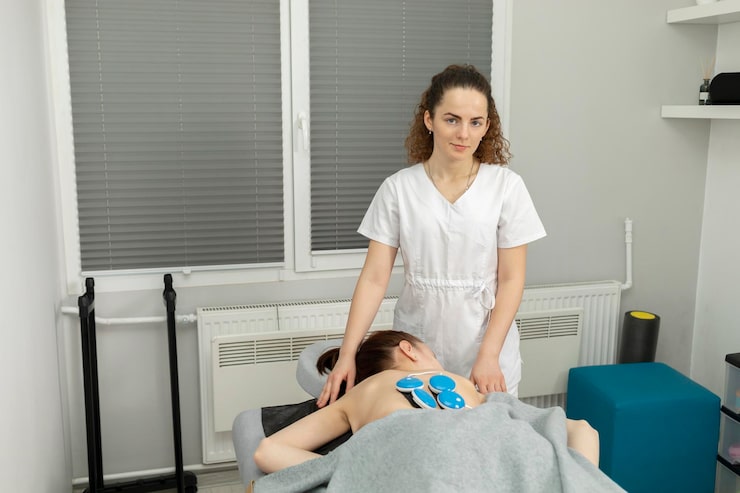Headaches and migraines are not just minor inconveniences; they can be debilitating and significantly impact one’s quality of life. While medications can offer relief, they are not always the best long-term solution. Physiotherapy, a treatment that involves physical methods to promote healing and well-being, has shown potential in addressing the root causes of headaches and migraines. In this blog, we will delve into how physiotherapy can help manage and alleviate these painful conditions.
The difference between a headache & a migraine
To comprehend how physiotherapy can be beneficial, it’s essential first to understand the nature of headaches and migraines. Headaches can range from mild discomfort to severe throbbing pain and are typically categorized into tension headaches, cluster headaches, and migraines.
Tension headaches are the most common type and are often caused by stress, poor posture, or muscle strain. They manifest as a constant ache or pressure around the head, particularly at the temples or the back of the head and neck.
Cluster headaches are severe, recurring headaches that occur in cyclical patterns or clusters. They cause intense pain around one eye and can last from weeks to months.
Migraines are more than just severe headaches. They are often accompanied by other symptoms such as nausea, vomiting, and sensitivity to light and sound. Migraines can be triggered by various factors, including hormonal changes, certain foods, stress, and sensory stimuli.
How Can Physiotherapy Help?
Physiotherapy aims to address the underlying physical issues that may contribute to headaches and migraines. Unlike medication, which primarily targets symptoms, physiotherapy seeks to treat the root cause. Here’s how:
- Alleviating Muscle Tension: Tight muscles in the neck, shoulders, and upper back can contribute to tension headaches and migraines. Physiotherapy techniques such as manual therapy can help relieve this tension.
- Improving Posture: Poor posture is a common culprit for chronic headaches. Physiotherapists can teach patients how to maintain proper posture, reducing the strain on muscles and joints.
- Enhancing Blood Flow: Some types of headaches are linked to poor blood circulation. Physiotherapy can improve blood flow through targeted exercises and treatments.
- Reducing Stress: Stress is a significant trigger for both headaches and migraines. Physiotherapists can introduce relaxation techniques and exercises that help manage stress.
Types of Physiotherapy Treatments for Headaches and Migraines
Physiotherapy encompasses various treatments, each tailored to address specific aspects of headaches and migraines. Here are some common types:
Manual Therapy
Manual therapy involves hands-on techniques to manipulate muscles, joints, and soft tissues. Techniques such as massage, joint mobilization, and myofascial release can help reduce muscle tension, improve joint function, and alleviate pain. For headache sufferers, manual therapy often focuses on the neck and upper back regions, where muscle tightness and joint stiffness are common.
Exercise Therapy
Exercise therapy includes a range of physical activities designed to strengthen muscles, improve flexibility, and enhance overall physical health. Specific exercises targeting the neck, shoulders, and upper back can be particularly beneficial for those suffering from tension headaches and migraines. These exercises can help correct imbalances, reduce muscle tension, and improve posture.
Postural Training
Poor posture is a leading cause of tension headaches. Physiotherapists can assess a patient’s posture and provide training to correct any imbalances. This might include exercises to strengthen the core and back muscles, advice on ergonomic setups for workspaces, and techniques to maintain good posture throughout the day.
Relaxation Techniques
Stress management is crucial for headache and migraine sufferers. Physiotherapists can teach various relaxation techniques such as deep breathing, progressive muscle relaxation, and biofeedback. These methods can help reduce stress levels and prevent the onset of headaches.
Benefits of Physiotherapy for Headache and Migraine Sufferers
Physiotherapy offers several advantages for individuals suffering from headaches and migraines:
- Non-invasive Treatment: Unlike medications, physiotherapy is a non-invasive treatment that carries minimal risk of side effects.
- Personalized Approach: Physiotherapy treatments are tailored to the individual’s specific needs, ensuring a more effective and targeted approach.
- Long-term Relief: By addressing the underlying causes of headaches and migraines, physiotherapy can provide long-term relief rather than just temporary symptom relief.
- Improved Quality of Life: Reduced frequency and intensity of headaches and migraines can significantly enhance a person’s overall quality of life.
What to Expect During a Physiotherapy Session
A typical physiotherapy session for headaches and migraines begins with a comprehensive assessment. The physiotherapist will take a detailed history of the patient’s symptoms, lifestyle, and any potential triggers. This is followed by a physical examination to identify areas of tension, poor posture, or other contributing factors.
Based on this assessment, the physiotherapist will develop a personalized treatment plan. This plan may include a combination of manual therapy, exercise therapy, postural training, and relaxation techniques. Patients are often given exercises to do at home to complement their in-clinic treatments.
Case Studies and Research Findings
Numerous studies have highlighted the efficacy of physiotherapy in treating headaches and migraines. For instance, a study published in the Journal of Headache and Pain found that manual therapy significantly reduced the frequency and intensity of tension-type headaches. Another study in the journal Cephalalgia reported that exercise therapy improved the quality of life for migraine sufferers.
These findings are supported by real-world case studies. For example, a patient suffering from chronic tension headaches experienced significant relief after several sessions of manual therapy and postural training. Another patient with migraines saw a reduction in the frequency and severity of attacks following a comprehensive physiotherapy program that included exercise therapy and stress management techniques.
Tips for Finding a Qualified Physiotherapist
When seeking physiotherapy for headaches and migraines, it’s essential to find a qualified and experienced physiotherapist. Here are some tips:
- Check Credentials: Ensure the physiotherapist is licensed and has the necessary qualifications.
- Look for Specialization: Find a physiotherapist who specializes in treating headaches and migraines.
- Read Reviews: Look for reviews or testimonials from previous patients.
- Ask for Recommendations: Seek recommendations from your healthcare provider or friends and family.
- Consultation: Schedule a consultation to discuss your symptoms and treatment options.
Sum Up
Physiotherapy can be a highly effective treatment for headaches and migraines. By addressing the root causes such as muscle tension, poor posture, and stress, physiotherapy offers a holistic approach that can provide long-term relief. Whether you suffer from tension headaches, cluster headaches, or migraines, consulting a qualified physiotherapist could be the first step towards a pain-free life. If you’re tired of relying on medications and looking for a natural, non-invasive solution, physiotherapy might just be the answer you’ve been searching for. If you need physiotherapy services in Scarborough, visit Physio Cottage for personalized care tailored to your needs.










